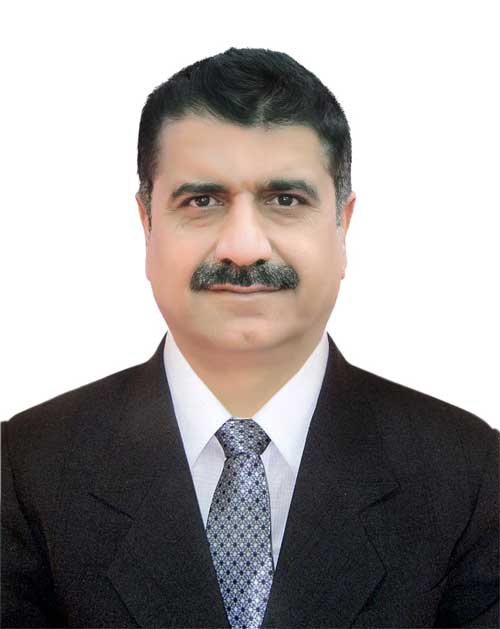Recently, I had the privilege of being part of a media delegation visiting Beijing and Shanghai, invited by the Chinese Consul General, Yang Yundong, and hosted by China Economic Net. This trip offered a unique opportunity to witness first-hand the rapid and remarkable development China has achieved in various sectors.
China’s rise as a global power over the past 75 years is a remarkable story of transformation, driven by economic, political, technological, and social shifts. The journey began with the establishment of the People’s Republic of China in 1949, led by the Communist Party of China (CPC) under Comrade Mao Zedong. Since then, China has undergone several stages of development, from the struggles of the early years to becoming a global economic powerhouse.
China’s rise is largely rooted in its economic reforms, particularly those introduced by Deng Xiaoping in the late 1970s. The shift from a strictly planned economy to a more market-oriented one was transformative. The Reform and Opening Up policy (1978) encouraged foreign investment, modernization of agriculture, industry, technology, and defence, and facilitated China’s integration into the global economy.
Since then, China has sustained decades of rapid growth, lifting over 800 million people out of poverty and becoming the world’s second-largest economy by nominal GDP. The development of industrial zones, free trade agreements, and its strategic Belt and Road Initiative (BRI) expanded its influence globally, connecting over 60 countries with infrastructure projects that enhanced its geopolitical reach.
Over the past few decades, China has made significant strides in technology and innovation. It is home to some of the largest tech companies like Alibaba, Tencent, and Huawei. The nation has also advanced in artificial intelligence, 5G technology, and space exploration, evidenced by its lunar missions and space station projects. As the world transitions to a digital economy, China’s technological prowess has positioned it as a leader in emerging fields.
Moreover, China’s push toward self-reliance in critical technologies is reshaping global supply chains and challenging the dominance of the West in fields like semiconductors and renewable energy. This drive for innovation is part of its broader goal of becoming a global leader in high-tech manufacturing.
China has also expanded its military capabilities, with significant modernization efforts transforming the People’s Liberation Army (PLA). Its growing naval power, space capabilities, cyber warfare units, and investments in defence technology have made China a formidable military force.
In recent years, China’s Belt and Road Initiative has extended to strategic military partnerships, further amplifying its global military reach, particularly in Africa and Central Asia. counterbalance the United China’s growing influence in global governance institutions has marked its ascension as a global power. It is an active participant in organizations such as the United Nations, G20, and the World Trade Organization, and it has increasingly positioned itself as a defender of multilateralism. Through initiatives like the Asian Infrastructure Investment Bank (AIIB) and BRI, China is creating alternatives to Western-dominated institutions like the World Bank and International Monetary Fund.
The Pakistan prime minister Shehbaz Sharif acknowledged China’s critical role during the negotiations with the International Monetary Fund (IMF).
Furthermore, China’s diplomacy is based on principles of non-interference and mutual respect for sovereignty, appealing to many developing countries. Its development aid and investments, especially in Africa and Latin America, have strengthened its soft power and positioned China as a leading advocate for the Global South.
China’s rise has not been without challenges.
China’s growing influence is reshaping the global order, but it is also drawing resistance from Western powers who view it as a strategic competitor. The U.S. Indo-Pacific strategy, Quad Alliance, and other regional alliances are responses to counter China’s influence in Asia and beyond.
China and India, despite their complex and often tense geopolitical relationship, engage in significant trade and economic cooperation due to mutual economic interests. The two nations are among the world’s largest economies, and their interdependence in trade is substantial.
China is one of India’s top trading partners, with trade volumes surpassing $100 billion annually in recent years. India imports a wide range of products from China, including electronics, machinery, chemicals, and pharmaceuticals. Chinese goods are integral to many sectors of the Indian economy, from consumer products to industrial machinery. India exports raw materials, chemicals, and agricultural products to China.
China has maintained pragmatic diplomatic engagement with the Taliban since their return to power in Afghanistan in August 2021, although it has not formally “recognized” the Taliban government in a traditional sense. China has kept its embassy open in Kabul, and officials from both sides have engaged in talks, particularly on economic cooperation, security concerns, and regional stability.
Internally, China’s transformation is also reflected in its society. The urbanization of millions of Chinese citizens, improvements in infrastructure, healthcare, and education, and the rise of a middle class have transformed its domestic landscape.
Culturally, China’s promotion of its cultural heritage globally through initiatives like Confucius Institutes and global events like the Beijing Olympics showcase its soft power.
In 75 years, China has transformed from a struggling nation to a global superpower, reshaping the geopolitical and economic landscape. Its rise is characterized by a blend of strategic economic policies and technological advancements. China’s trajectory suggests it will continue to play a dominant role in shaping the future of global governance, trade, and technology.





